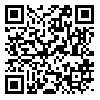Volume 9 - Special Issue for Nutrition
J Health Syst Res 2013, 9 - Special Issue for Nutrition : 1562-1571 |
Back to browse issues page
Download citation:
BibTeX | RIS | EndNote | Medlars | ProCite | Reference Manager | RefWorks
Send citation to:



BibTeX | RIS | EndNote | Medlars | ProCite | Reference Manager | RefWorks
Send citation to:
Maryam Mirlohi, Akbar HassanZadeh, Ahmad Esmaeel Zadeh, Mohammad khoshnevissan. Meat consumption pattern and priorities in Unban families in Isfahan- Iran. J Health Syst Res 2013; 9 (S1) :1562-1571
URL: http://hsr.mui.ac.ir/article-1-549-en.html
URL: http://hsr.mui.ac.ir/article-1-549-en.html
1- Assistant professor, Food Security Research center, Department of Food Technology, School of Nutrition and Food Science, Isfahan University of MedicalScience, Iran (Corresponding Author) Email: m_mirlohi@hlth.mui.ac.ir
2- Statistical Consulting, Department of Epidemiology, School of health, Isfahan University of Medical Science, Iran
3- Associate professor, Food Security Research center, Department of Community Nutrition, School of Nutrition and Food Science, Isfahan University of MedicalScience, Iran
4- Post graduated in Nutrition, School of Nutrition and Food Science, Isfahan University of Medical Science, Iran
2- Statistical Consulting, Department of Epidemiology, School of health, Isfahan University of Medical Science, Iran
3- Associate professor, Food Security Research center, Department of Community Nutrition, School of Nutrition and Food Science, Isfahan University of MedicalScience, Iran
4- Post graduated in Nutrition, School of Nutrition and Food Science, Isfahan University of Medical Science, Iran
Abstract: (2000 Views)
Background: In every society, meat costs the most expensive parts of food basket, meat consumption is noticeably different in poor and rich societies. Since meat intake has been associated with several chronic impairments, reduction of red meat in the diet has been recommended by several health information services. However It is not clear yet to what extent the employed policies has been effective among the urban families in a metropolitan Like Isfahan city. Methods: A descriptive cross-sectional study was performed in Isfahan 2010. A total of 1067 subjects from Isfahanian urban were included in the study through two stage cluster sampling. Data analyzing was performed using SPSS software and descriptive statistics. In order to compare the mean consumption data in every quartile, one way ANOVA analysis as well as LSD comparison test was carried out. Findings: the repose rate of this study was estimated at about 62%. More than 60% of the subjects referred to Lamb meat as their first priority for making meaty foods. Chicken, fish and beef were stated to be preferred after lamb meat. Average daily consumption of red meat, chicken meat and fish were obtained as 20.46, 24.61 and 2.64 respectively. Among demographic parameters, the number of family members was found to have significant effect on the chicken and red meat consumption. Conclusion: Based on the results of the present study, trendy towards fish consumption has been increased comparing to previous study in Iran. However the average fish consumption is still far too below than the worlds' average. Although based on questioner data, economical issues have not any major effect on the meat preference, an upward significant relation between the number of families and chicken and red meat consumption confirmed that economical matters have great impact on the meat consumption in an Isfahan urban Families. Key Words: Red meat, chicken, Fish, Consumption pattern, Meat preferncence
Type of Study: Research |
Subject:
education health and promotion
Received: 2020/07/16 | Accepted: 2021/08/10 | Published: 2021/08/10
Received: 2020/07/16 | Accepted: 2021/08/10 | Published: 2021/08/10
| Rights and permissions | |
 |
This work is licensed under a Creative Commons Attribution-NonCommercial 4.0 International License. |





